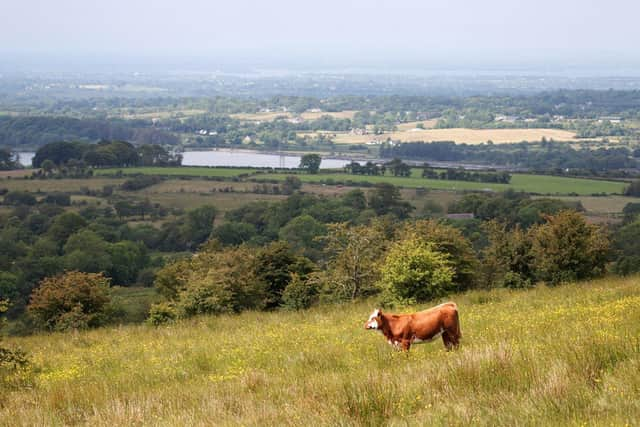Conservative charity Ulster Wildlife has unveiled the plan for an area of grassland that is the size of 480 football pitches.
The move comes after the charity bought 133 hectares of land adjacent to its existing nature reserve at Slievenacloy on the western outskirts of the city.
The expanded site now covers 258 hectares.
The existing Slievenacloy reserve is a designated Area of Special Scientific Interest (ASSI).
Ulster Wildlife describes it as one of best species-rich grassland sites in Northern Ireland, hosting a diverse range of wildflowers and wildlife, including orchids, common lizards, waxcap fungi and skylarks.
The charity says flower-rich meadows have declined by 97% in Northern Ireland over the last 50 years.
The newly purchased land consists of grass and peatland habitats. It will now be subject to a conservation management plan as part of the Slievenacloy project.
Part of the plan involves partnerships with local farmers to allow nature-friendly grazing on the site – something that aids in the conservation of the land.
The charity said the project will boost biodiversity and also help contribute to carbon storage and flood prevention.
Stormont’s Department of Agriculture, Environment and Rural Affairs (Daera) contributed £600,000 to the purchase of the land through its Environment Fund. The project was also supported by a donation from Moy Park.
Money donated to Ulster Wildlife through gifts in wills were also used to fund the purchase, as were several philanthropic loans.
Deara minister Edwin Poots welcomed the initiative.
“I am delighted that my department was able to make a significant contribution of almost £600,000 through the Environment Fund to enable Ulster Wildlife to secure this additional land, substantially expanding the Slievenacloy Nature Reserve,” he said.
“I visited the nature reserve in 2020 to see the work carried out through an earlier project, also funded through the Environment Fund, which involved the upgrading of pathways and interpretive signage as well as the installation of accessible gates within the ASSI.
“In addition to the benefits this extension will bring to nature, it will provide the opportunity for facilities to be created in the future which will enable members of the public to enjoy the outdoors within this important piece of our landscape.”
Slievenacloy is now the largest of Ulster Wildlife’s 18 nature reserves.
While the new land will not initially be open to the public, “sensitive” access is to be facilitated following a planning phase.
The original lands in the Slievenacloy reserve remain open for walking.
For more information visit www.ulsterwildlife.org/nature-reserves

